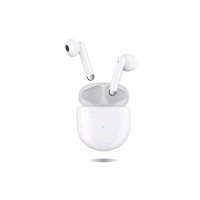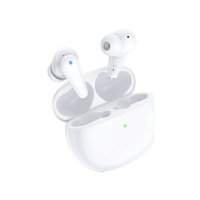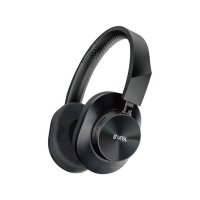How to Stop Your Headphones From Picking Up Background Noise
Background noise can be a major headache when you're trying to enjoy music, take a call, or focus during work.
No one wants to deal with annoying background sounds seeping through their headphones, but the good news is that there are ways to combat this issue.
Whether you’re using wired, wireless, or noise-canceling headphones, here are some practical tips to minimize or eliminate background noise and get the most out of your headphones.
1. Choose the Right Headphones
The type of headphones you use plays a huge role in how much external noise you’ll hear. Here’s a breakdown:
Noise-Canceling Headphones
Active Noise Cancellation (ANC) headphones use microphones to detect outside noise and generate sound waves that cancel it out. They’re effective at reducing constant background noise like the hum of an air conditioner or traffic sounds.
These are ideal for use in noisy environments like airplanes, offices, or public transportation.
Noise-Isolating (Passive Noise Cancellation) Headphones
These headphones don’t use electronics to cancel noise. Instead, they physically block out sound through padded ear cups or in-ear tips.
Over-ear headphones usually offer better isolation, while in-ear or earbuds can also provide effective noise isolation if they fit snugly.
2. Get a Good Fit
Fit is key to reducing background noise. Even the best headphones won’t perform well if they’re not properly positioned.
Over-Ear Headphones: Make sure the ear cups cover your ears fully without gaps. The better the seal, the less outside noise will get through.
In-Ear Headphones: Choose foam ear tips or a range of sizes for a comfortable fit that creates a tight seal in your ears. A poor fit can let a lot of sound leak in, no matter how good your headphones are.
3. Use the Right EQ Settings
Sometimes, background noise comes through because your headphones are set to an improper EQ (equalizer) setting, especially if you’re listening at a lower volume.
What you can do:
Adjust your bass, mids, and treble levels in your phone’s settings or music app.
A balanced EQ can prevent sound distortion and ensure you hear less background noise.
Boost the mids and treble to make vocals and other important sounds clearer, while reducing the bass if you're in a noisy setting.
4. Activate Noise-Canceling Features (If Available)
If you have noise-canceling headphones or earbuds, make sure the ANC feature is enabled and working properly.
Tips for Optimizing ANC:
Charge the battery: Some noise-canceling features depend on power, so ensure your device has enough charge to function properly.
Adjust settings: Some headphones allow you to change the intensity of noise cancellation. Experiment to find the level that works best in different environments.
5. Create a Quieter Environment
While headphones are designed to block out noise, sometimes the environment around you is just too loud for even the best headphones to handle.
Try these ideas:
Move to a quieter space: If you're in a noisy location, like a café or crowded area, try to find a quieter corner or room where external noise is minimized.
Use white noise or soundproofing: If you can't escape the background noise, try using white noise apps or soundproofing techniques like noise-canceling curtains or foam panels for added isolation.
6. Check for Audio Source Issues
If the background noise seems to be coming from your audio source (phone, laptop, etc.), it might not be your headphones at all.
Lower the volume on your device: Sometimes, background noise becomes more noticeable at lower volumes.
Use a different audio source: If you're using Bluetooth, try switching to wired headphones to eliminate possible wireless interference.
7. Update Firmware or Software
For wireless or noise-canceling headphones, firmware updates can improve performance. Manufacturers may release updates to improve noise cancellation or sound quality.
Check the manufacturer’s app (e.g., Bose, Sony) for any available updates for your headphones.
8. Use External Noise-Canceling Apps
If your headphones don’t have active noise-canceling features, consider using an app on your phone that generates white noise or ambient sounds to mask background noise.
There are various apps available that create soothing soundscapes to drown out distracting sounds and help you focus.
Final Thoughts
Eliminating background noise when using your headphones isn’t always about buying the most expensive pair.
Choosing the right type of headphones, ensuring a good fit, and optimizing settings can make a huge difference. Whether you opt for noise-canceling headphones or rely on passive noise isolation, these simple strategies can help you achieve a quieter, more enjoyable listening experience.
If background noise continues to be a problem despite your best efforts, it may be time to invest in a higher-quality pair of noise-canceling headphones that can better tackle loud environments.



